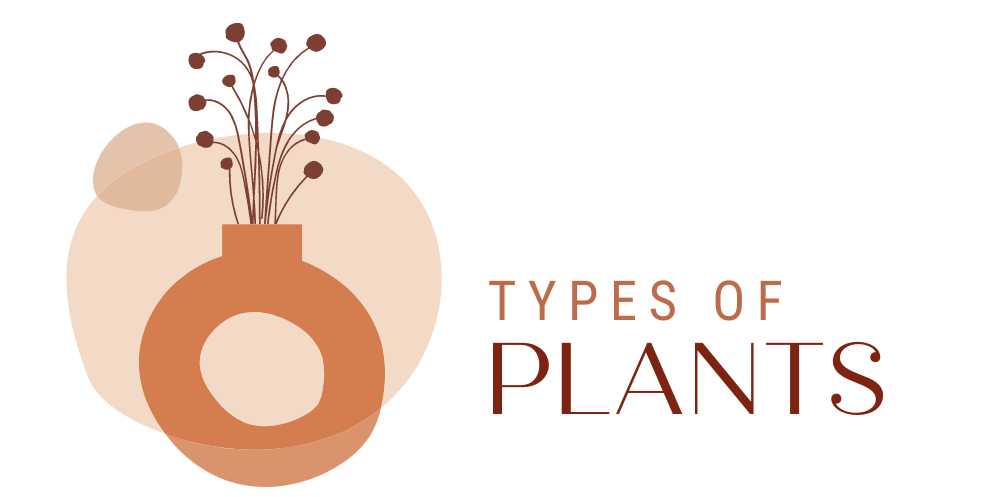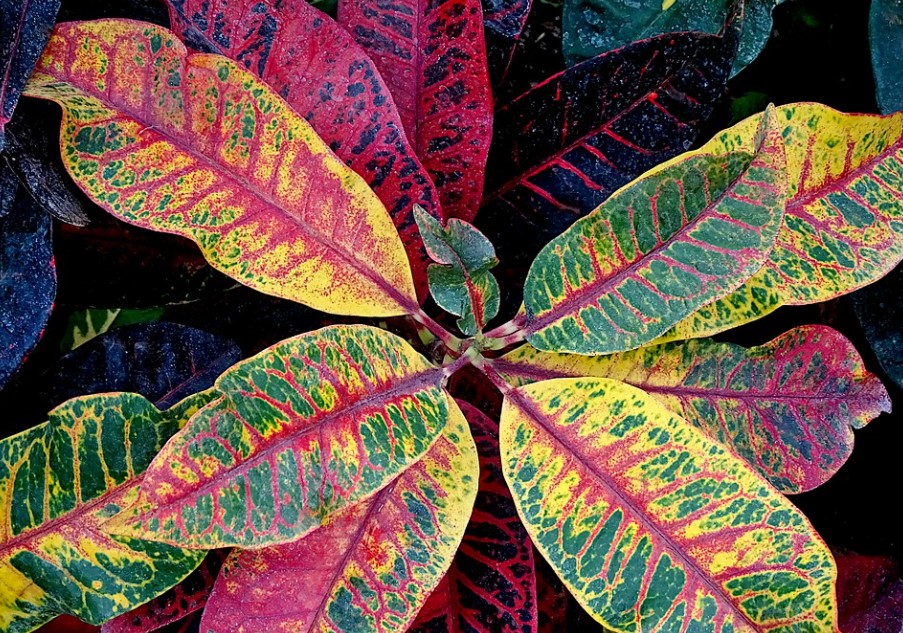Wishing to add a new plant to your home garden? Then you may want to consider growing lovely croton plants. Crotons are popular and loved by many for their bright foliage, making them an excellent addition to your home garden. This is the reason why today, we’ll be telling about different croton varieties to grow at home.
Croton plants are loved for their bright, radiant foliage, which showcases an array of color tones spanning tropical greens, pinks, reds, yellows, and more. These plants are excellent natural air purifiers and perform a stellar job removing harmful airborne toxins.
Croton Plants are relatively easy, low-maintenance plants to grow at home. However, if you are new to the croton plant, we’ll start with the basics, what kind of croton you should grow, how to plant them, and of course, how to care for your plant. Continue reading and learn about different croton varieties.
Croton Varieties FAQ’s
What is the croton plant?
The genus Croton comprises many flowering plants, including a range of herbs, shrubs, and trees. They hail from the Euphorbiaceae family, which are predominantly native to tropical climates in the Indo-Malayan and Central American regions.
They come in different shades of green, red, ivory, orange, copper, pink, and brown; crotons offer a splash of color wherever you plant them.
Are croton plants toxic?
Most croton plants are toxic if consumed, so it’s best to lean on the side of caution and keep these plants away from pets and children, mainly if you’re growing in an indoor environment.
How many croton varieties are there?
Croton plants come in more than 100 varieties. Its leaves, which shapes may vary, come in all autumn colors: red, yellow, green, copper, orange, brown, pink, and ivory. The colors spread over the entire leaf to create a visually pleasing plant. Most need brightly lit locations and moist soil to thrive.
Do crotons like sun or shade?
Crotons should receive good light for the best color development but have some protection from the full midday sun. Their color burns out in the full sun and hardly develops in the shade. Even crotons bred for indoor use need as much light as they can get to hold their color well.
Which crotons do best in the shade?
Shade Favoring Crotons: Eburneum and her 2 ‘sisters’: yellow/green Tamara and the white Lucia. While Petra & yellow Petra can take lots of Sun, leaf definition is more pronounced when shade-grown.
What is a Petra croton?
Petra Crotons are easy-to-grow houseplants and are known for their colorful and variegated foliage, covered in green, red, orange, and yellow shades. At Calloway’s and Cornelius, we have several varieties, sizes, and styles of Croton plants for you to find your favorites.
Will croton grow in the shade?
Croton does best in fertile, well-drained, moist soil. They need bright, indirect light when grown indoors. Outdoors thrive in partial shade, and in cool climates can tolerate full sun if kept moist (and are acclimated first when moved from inside).
Why is my croton mostly green?
Croton foliage emerges green, then usually turns yellow and eventually darker shades of red as the season progresses. Most evergreen trees and shrubs shed their old leaves as new foliage emerges.
How to grow croton plants?
- Crotons flourish in shifting full sun conditions. That doesn’t mean they won’t thrive in partial shade environments.
- Some varieties do better in light shade. Too much direct sunlight may fade leaf color and affect the plant’s growth.
- Select a place positioned to take in the shifting sun when choosing an outdoor location.
- Crotons prefer well-drained soil, whether outside in the ground or inside in containers.
- Croton plants do very well in warm, humid climates (USDA zones 9b to 11), such as in subtropical regions.
How to care for croton plants?
- Light: find a location in your home that receives plenty of bright, indirect light throughout the majority of the day.
- Soil: pot with a nutrient-rich, well-draining soil mix
- Water: croton plants love moisture but should never be left to standing in a saturated soil base. Water every 7 to 10 days in spring and summer when the top few inches of soil feel dry to the touch.
- Fertilize: monthly in spring and summer only with an all-purpose, water-soluble houseplant feed.
- Repotting: aim to upsize if necessary ahead of the new growing season in early spring when necessary.
Croton Varieties
- Zanzibar Croton: Zanzibar can grow up to 3-4 feet tall. It produces green, red, purple, orange, and yellow narrow leaves and works as a great contrasting plant. You can also grow it as a houseplant.
- Yellow Iceton Croton: Yellow Iceton shows off mid-green foliage with lush yellow variegation. The plant can reach up to 3-4 feet tall.
- Victoria Gold Bell Croton: This croton has a distinct leaf structure that dangles off from the plant. It comes in orange, red, green, or red color that changes with the light levels the plant is exposed to.
- Red Iceton Croton: Red Iceton produces yellow leaves that mature in a striking shade of red and pink hues with bright veins. It attains a height up to 7-8 feet when grown outdoors.
- Sunny Star Croton: Sunny Star features large elliptical light green leaves, dashed in gold color near the base of each leaf. It also works as a great houseplant and can attain a height of 4-6 feet.
- Oakleaf Croton: The Oakleaf croton exhibits tri-lobed leaves in shades of burgundy, red, green, orange, and yellow. You can plant it on walkways or grow it indoors near a good light source as well.
- Mother and Daughter Croton: This exotic croton variety shows off long narrow leaves that end in a point and interestingly give an appearance of holding another small leaflet.
- Mrs. Iceton Croton: This beautiful specimen displays light green leaves shaded with yellow, golden, orange, and red tones. It can reach up to 3-6 feet tall.
- Mammy Croton: Mammy produces thick, glossy, large curly leaves in the shades of red, green, purple, and bright yellow.
- Lauren’s Rainbow Croton: The long, narrow leaves of Lauren Rainbow have shades of yellow, green, and deep purple. It grows up to 4-5 feet tall with a similar spread.
- Gold Star Croton: This beautiful, slow-growing variety has narrow dark green leaves patterned with shiny yellow splashes. It can reach up to a height of 3-6 feet.
- Florida Select Croton: This showy plant has smooth and medium-sized velvety green leaves with orange, red, and yellow veins. It is poisonous if ingested.
- Gold Dust Croton: Also known as Sun-Spot Croton, it features bright green oval-shaped leaves sprinkled with golden yellow spots. It needs full exposure to bright indirect sunlight.
- Bush on Fire Croton: This croton produces leathery leaves in the shades of pink, green, red, orange, and yellow. The color of the leaves changes with age.
- Eleanor Roosevelt Croton displays green to purple, long narrow leaves sprinkled with golden yellow hues. It was originated in the year the 1920s. It attains height up to 4-6 feet.
- Banana Croton: Offers colors to your interior with this bright croton variety with lance-shaped green leaves splashed with banana-yellow.
- Andrew Croton: This popular croton variety produces narrow, long green leaves with creamy white streaks. It reaches up 3-5 feet tall.
- Magnificent Croton: It is a compact plant with huge dark green-colored variegated leaves spotted with pink, red, orange, bright yellow, and purple.
- Picasso’s Paintbrush Croton: Picasso’s Paintbrush is a variety with thin leaf that lives up to its artistic name with a brilliant pastel color pallet. The narrow leaves also make it look similar to ornamental grass.
- Chocolate Caricature Jamaican Croton: This variety has such a unique set of colors that sets it apart from any other croton variety. The Chocolate Caricature Jamaican Croton looks striking with dark green chocolate-colored leaves and subtle bronze and pastel pink hints.
Croton Varieties To Grow at Home
Croton Petra
Add some color to your home with this medium croton petra. This gorgeous tropical plant thrives in brightly lit spots.
The more sun it gets, the more rainbow shades will appear in its variegated foliage. You can usually expect warm stripes of red, pink, and yellow contrasting with dark green. Bright and bold, it’s surprisingly easy to care for.
This croton petra is packed with vibrant tropical colors. A rainbow marvel, it’s at its best in bright rooms. Exposure to the sun helps its foliage to flourish in shades ranging from yellow to red and everything in between.
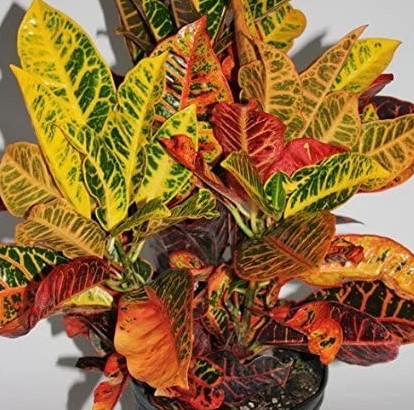
Features:
- Likes indirect light
- Water when dry
- Blooms year-round
Chocolate Caricature Jamaican Croton
Chocolate Caricature Plant is a colorful, interesting, fast-growing soft-stemmed, tropical perennial. There are a number of different cultivars, but the classic and most popular is this one with chocolate bronze foliage that has an interesting creamy, pale pink variegation.
The common name of Caricature comes from the interesting pictures that can be imagined when contemplating the variegation pattern.
In the tropical landscape, the Chocolate Caricature plant makes a wonderful addition or background in mixed beds, as it will reach a mature height of around 6 feet fairly quickly.
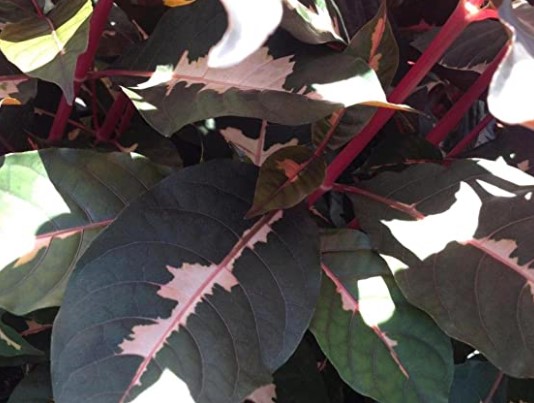
Features:
- Air Purification
- Indoor
- Full Sun
Banana Croton
Crotons come in more than 100 varieties. Leaf colors include yellow, green, copper, red, pink, orange, brown, and ivory, which may spread over the whole leaf or appear as veining, spots, blotches, or other patterns.
Leaf shapes also vary: they may be slender and up to 18 inches long, flat, and up to 6 inches wide, lobed, ribbed, crinkled, or twisted into corkscrew shapes.
Crotons grow fast; plants less than 12 inches tall may become bushy 3 to 5-foot shrubs within two or three years if not pruned.
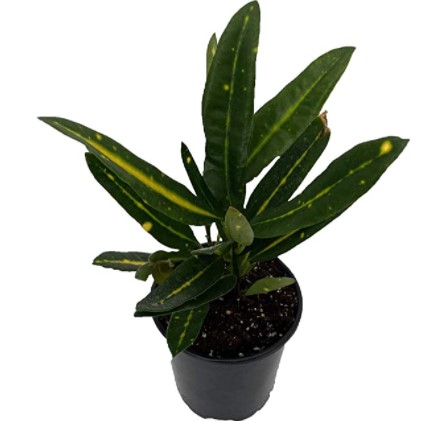
Features:
- Prefers very bright
- Indirect light
- Keep evenly moist
ICETON Croton
This is a moderately fast-growing Croton with long, narrow, pointed leaves. The color palette is pink, peach, deep black-purple, and dark bronze-green.
It will mature at around 4 feet and is versatile and interesting. Its key features are the unique pastel color palette, holding the lower foliage, and staying bushy with less pruning.
The color range shifts and changes depending on the age of the growth, available light, and current ambient temperatures.
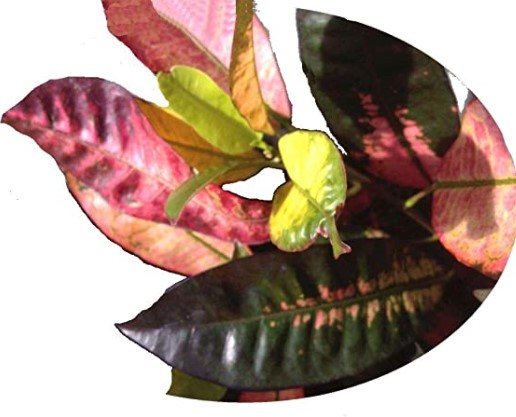
Features:
- Drought Tolerant
- Outdoor
- Full Sun
Croton ‘Mammy’
This colorful beauty is one of the smaller members of the croton family, making it an ideal houseplant. It thrives in warm places, so keep it away from drafty windows.
Browning leaves are an indicator of too much water. Adjust watering, and new leaves will grow happy and healthy.
The height of the plant is approximately 5 “-9” long from the bottom of the pot to the top of the plant.
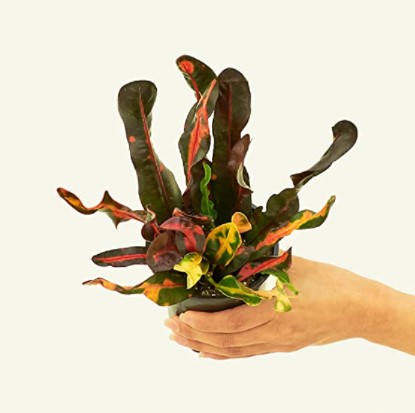
Features:
- Not pet-friendly
- Bright indirect light
Now you know about all croton Varieties, but what do you know regarding beet varieties?
